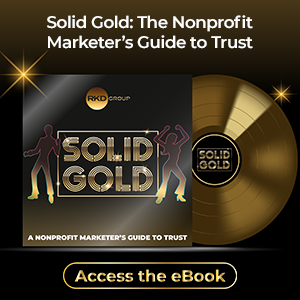As 6% of total giving, corporate dollars may represent a small slice of the philanthropic pie, but for nonprofits who know how to speak the language of business, it can be a powerful source of long-term support. If one relationship yields annual gifts of over six figures, it is a wonderful investment of your time.
Too often, corporate giving is treated as a one-off sponsorship or point-of-sale campaign. But the most successful organizations build partnerships to create sustainable change. They do the work to align with a company’s mission, culture and social-impact goals, and they do it on the company’s timeline.
If you’re serious about growing your corporate revenue, here’s what it takes to show up as a partner:
1. Understand why companies give
Corporations are separate from foundations. As businesses, their giving is about social and economic gain. Companies donate because it aligns with their goals, boosts their brand reputation and improves employee satisfaction.
Be prepared. If your nonprofit comes across as disorganized or desperate, you’ll lose the opportunity. Corporations support the winning team that delivers sustainable impact and makes a measurable difference in the world. They want to be associated with a recognizable brand with a positive image, whether national or local.
2. Speak their language
Before you reach out, do your research. How does the company refer to its employees? Are they “team members,” “associates” or “crew”? What are their stated corporate social responsibility (CSR) goals? Do they align with the United Nations’ Sustainable Development Goals, and if so, which ones?
Show the company that you understand their priorities and business goals. When you tailor your message to reflect their language and culture, you position yourself as a strategic partner and not just another nonprofit asking for money.
3. Map the giving buckets
Corporate giving is not one-size-fits-all. Most companies have multiple funding buckets, each with its own stakeholders and budget:
- HR handles CSR, employee giving, matching gifts and volunteerism.
- Marketing oversees sponsorships and point-of-sale campaigns.
- C-Suite manages leadership giving, corporate foundations and strategic grants.
Understand who funds what, and structure your ask accordingly. Corporations often plan a full year in advance, so pitching an event three months out will likely be a no-go.
4. Build the relationship first
Just like major donors, corporations want to test the waters. Start small, prove your value, and grow the relationship over time.
Find your champion. People give to people they like, and you need someone to represent your mission internally.
Ways to get your foot in the door:
- Ask a board member to introduce you to someone in the C-suite.
- Approach the HR team. Meeting with nonprofits is part of their job.
- Show genuine care for the company’s employees and community footprint.
- Be kind to the gate keeper. Reception, assistants, etc. hold more power than you think. Win them over, and they will return the favor.
And once you’ve opened the door? Stick to one point of contact and button up the loose ends. Streamlined communication and follow-through are crucial to building trust and removing obstacles.
5. Show the ROI
Corporate partners don’t just want a thank-you letter. They want proof of impact.
Create an annual impact report with photos of employee volunteer days, campaign highlights and measurable outcomes. Tell the story of how their support made a difference, and make them the hero of the story. “You provided 250 hungry people with meals,” not, “Your donation allowed us to give food to 250 people.”
If you do it right, the report won’t just satisfy your contact; it will be shared internally, spark employee pride and lay the groundwork for renewal and potentially increased support.
Remember that the employees can also be donors! Letting them see the work you are doing in their own back yard leads to secondary donor acquisition.
Corporate giving is a relationship before a revenue stream
There’s no shortcut to authentic connection, whether it’s a Fortune 500 company or a family-run business. The most successful nonprofits approach corporate partnerships like they would a major donor: with care, curiosity and a commitment to mutual value.
When you build deep relationships rooted in trust and alignment, revenue follows. And when that happens, everyone wins.


.png?width=2000&height=2000&name=image%20(30).png)



Leave a comment: